Papers by Lasse Juel Larsen
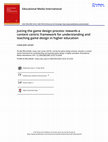
Educational Media International, 2018
The aim of this article is to advance a framework for understanding and teaching game design in h... more The aim of this article is to advance a framework for understanding and teaching game design in higher education, in order to address complexities inherent in teaching game design courses. Everyday teaching and learning game design often deviate from the standard textbook model of game design. In reality everyday teaching and learning operate with handling game design curriculum, how to think games, and how to organise the development process. The presented framework merge curriculum, thinking, and process guided by the game design concept of juiciness. The framework will be presented by dismantling the standard textbook model of game design into three; game design (curriculum), game design thinking (thinking), and game development (organisation). In this perspective game design is concerned with game mechanics, game design thinking preoccupied with paper prototyping, metaphor, and framing, while game developments addresses player experience including play and game testing. This article will coin vertical design as juiciness as opposed to horizontal design understood as expanding system layout. Juiciness will be placed as a guiding principle in the relationship between designers and designed content as an aspect of designer intentions and motivations. Lastly, the content centric framework will be presented by merging game design, game design thinking, game development, vertical design with selected aspects of accepted software development strategies as an approach to teaching and learning game design in higher education.
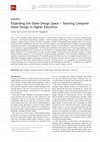
Designs for Learning, 2016
This article considers game design research in educational settings. Its focus is on how undergra... more This article considers game design research in educational settings. Its focus is on how undergraduate students-particularly engineering students-learn computer game design. From observations conducted during our game design courses we have developed a model of expanded game design space. It encapsulates the entire development process from the first ideas to the final game with emphasis on game design thinking. Our model of expanded game design space consists of four separate-yet interconnected-layers in the process of game development. The first layer addresses the importance of framing, providing a clear game design assignment that involves the formulation of intended player experience and a description of game mechanics. The second layer focuses on game design thinking from six different aspects of game design chosen in relation to the framing of the game design assignment. The third layer establishes correspondence between formal elements of computer games and the structure of problem-based creativity. It addresses how game design challenges should be formulated and how creative solutions can be measured. The fourth and final layer demonstrates how clear framing can act as a guideline for evaluating game design thinking and for measuring solutions made in the development process. To strengthen our model of expanded design space, we will present examples from our game design courses.

Lecture Notes of the Institute for Computer Sciences, Social Informatics and Telecommunications Engineering, 2017
ArtsIT (Arts and Technology) has previously been presented on four occasionssee the contribution ... more ArtsIT (Arts and Technology) has previously been presented on four occasionssee the contribution by Brooks and Brooks in this publication. Reflecting trends in the expanding field of digital art, interactive art, and how game creation is considered an art form, the decision was made to modify the title of ArtsIT to be known as "The International Conference on Arts and Technology, Interactivity and Game Creation," but still with the acronym ArtsIT. Complementing the ongoing series and to expand the European Alliance for Innovation (EAI) portfolio of events, an initiative to establish a new and complementary event to ArtsIT was undertaken and titled "The International Conference on Design, Learning and Innovation (DLI)." The keynote lecture for ArtsIT was given by Antoni Jaume-i-Capó from Universitat de les Illes Balears, Spain, who enthralled attendees in the first session of the first day. The DLI keynote took place on the second day with Sudarshan Khanna and Surabhi Khanna sharing their focused research on play and toys. This LNICST book presents the proceedings of the two-day co-located ArtsIT and DLI events of 2016. Sessions were hosted in two adjacent auditoriumsto facilitate delegate ease of accesswith coffee and adjacent relaxation areas overlooking University Park where the campus of Aalborg University in Esbjerg is located. The campus is a short distance from downtown where all major hotels, restaurants, shopping and entertainment can be found near the busiest port in Denmark. Also close by is the high-standard youth hostel: all ideal for delegate access. Known as the "Energy Metropolis," Esbjerg is a major supplier to the offshore industries as well as being a key fisheries location. Culture is also a main aspect of the city with it being a regular winner of the Danish City of Culture Award. The opening contribution in this book is by the editors, who, as authors, detail the strategy behind the initiative of a co-located double conference for the European Alliance for Innovation. The first delegate paper is titled "The Farm Game: A Game Designed to Follow Children's Playing Maturity.

Journal of Computer Games and Communication, 2016
This article is a study of the aesthetics of action in computer games seen from the perspective o... more This article is a study of the aesthetics of action in computer games seen from the perspective of game design. It is an investigation of what constitutes the aesthetics of action. The study assumes aesthetics of action can be formally mapped out and that they inherently involve identifiable and translatable effects, reflected as sensations in players. In what follows will a specific range of techniques from computer games, play and movies be used as examples and compared in order to demonstrate a common ground for the aesthetics of action across computer games, play and movies. The working hypothesis is that the aesthetics of action and the affinities between medias centre on collision. It will be suggested that collisions produce thrills ranging from the pleasure of destruction to the experience of spatial disorientation. Following will the aesthetics of action be coined 'collision thrills'. The examination of the aesthetics of action will draw on aesthetic theory (Dewey, 2005; Burgin, 2010) and will be analysed with the game design concept of 'game feel' (Swink, 2009) and assaultive action aesthetics (Stork, 2013) from media studies.
International Journal of Play, 2015
The aim of this article is to present a formal definition of the aspect of play generally known a... more The aim of this article is to present a formal definition of the aspect of play generally known as 'make-believe'. 'Make-believe' is defined in relation to theory of place and Dasein's beingin-the-world as presented by Martin Heidegger in Being and time. From this point of view 'make-believe' can be defined as a uniform and situational spatial dyad where being is doubled, characterized by the presence of the physically absent. I will apply this definition after a survey of central and influential aspects of the history of the theory of play to demonstrate its relevance for a formal definition of play.
Game-based learning og gamification er ord, der ofte optræder i forbindelse med computerspil og l... more Game-based learning og gamification er ord, der ofte optræder i forbindelse med computerspil og læring. Denne artikel vil analytisk undersøge, hvordan computerspil og læring går i forbindelse med hinanden. Artikel tager afsæt i Gregory Batesons læringsteori og læser denne igennem det kommercielle computerspil StarCraft 2 fra Blizzard Intertainment. Batesons læringsteori vil ikke alene blive gennemgået, men også udvidet og perspektiveret. Formålet med denne indsats er at skabe et afsæt, der kan demonstrere, hvordan læring foregår i computerspil. Herefter vil afsættet blive anvendt til at destillere et læringsteoretisk udkast. Artiklen falder således i to dele, hvor den første analytisk adresserer, hvordan læring i computerspil foregår, mens den anden er teoriproducerende på baggrund af resultaterne fra første del.
Technology, Knowledge and Learning, 2019
A revision of Gregory Bateson's learning theory through a micro-level analysis of how learning ta... more A revision of Gregory Bateson's learning theory through a micro-level analysis of how learning takes place in the computer game StarCraft 2.
Convergence: The International Journal of Research into New Media Technologies, 2019
The goal of the article is to present a theory of game feel inspired by phenomenology. Martin Hei... more The goal of the article is to present a theory of game feel inspired by phenomenology. Martin Heidegger’s tool analysis and concept of time ( Sorge), as well as Maurice Merleau-Ponty’s Body-Subject including the related phenomena intentional arc, maximal grip and flow of coping, are of special interest. The aim is to move beyond the descriptive game design take on game feel by inserting the body in a first-person perspective, highlighting a sensuous approach with emphasis on rhythm and controller. We offer a methodological framework for analysing game feel consisting on three levels: ‘Dance’, ‘Learn’ and ‘Inhabit’. Finally, we arrive at an understanding of game feel explaining reasons for player sensitivity towards game feel and clues to why players care so deeply about it.
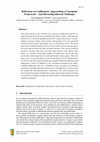
International Journal of Serious Games, 2021
This article discusses the relatively new concept of ludification with the attempt of laying the ... more This article discusses the relatively new concept of ludification with the attempt of laying the theoretical groundwork for further studies. Although ludification ties in with both gamification and the concept and practice of transmedia it possesses unique characteristics and qualities of its own, primarily evolving around games and playful ways of structuring stories. The focus point is how traditional media such as tv-series and movies incorporate game-like traits and structures into their narrative structure. This concerns both the narrative structures that users can and cannot interact with. Among other things, we consider a deep understanding of ludification vital for the more practically oriented approach to learning through (serious) games. Thus, this paper serves as a prolegomenon to the interpretation of works of ludification, as well as to the diverse field of deploying gamified material in didactical and pedagogical context. In addition to the conceptual groundwork for un...
Games and Culture, 2019
The goal of the article is to present a new theory of the concept of gameplay, a term everybody u... more The goal of the article is to present a new theory of the concept of gameplay, a term everybody uses without ample definitions and with little consistency. The aim is to provide an understanding of gameplay outlining the inherent complexities and convoluted layers of play and game which exist in the playing of a game. The theory is inspired by phenomenology and Martin Heidegger’s concept of Dasein. We do not intent to resolve the paradox that games are both objects and activities. Instead, we offer an analytical and methodological guide to the ontology of gameplay resting on an oscillating relationship between a double-layered structure of “here” and “there” in playing and gaming.

Lecture Notes in Computer Science, 2020
This paper discusses the relatively new concept of ludification with the attempt of laying the th... more This paper discusses the relatively new concept of ludification with the attempt of laying the theoretical groundwork for further studies. Although ludification ties in with both gamification and the concept and practice of trans-media it possesses unique characteristics and qualities of its own, primarily evolving around playful ways of creating and interacting with stories. The focus point is especially how traditional media such as tv-series and movies incorporate game-like structures into their narrative structure. This concerns both the narrative structures that users can and cannot interact with. Among other things, we consider a deep understanding of ludification vital for the more practically oriented approach to learning through (serious) games and game mechanics. Thus, this paper serves as a prolegomenon to the interpretation of works of ludification, as well as to the diverse field of deploying ludified material in didactical and pedagogical context.
Artiklen bidrager med et eksempel på anvendelse af Augmented Reality til at understøtte undervisn... more Artiklen bidrager med et eksempel på anvendelse af Augmented Reality til at understøtte undervisning i solsystemet i en 6. klasse. Augmented Reality forbinder den fysiske og virtuelle verden i fx 3D-kloder der svaever hen over laerebogen. Der blev i forløbet udviklet en app hvor eleverne kunne se størrelsesforhold og bevaegelsesmønstre for planeter i solsystemet. Eleverne og natur/teknologilaereren bidrog aktivt i designprocessen. De saerlige erfaringslaeringspotentialer i casen kan beskrives under temaerne: om at se det usete – anvendelse af teknologien som linse til en fjern virkelighed og om at forstå rumlige objekter og bevaegelser i tre dimensioner.

Normal 0 21 false false false DA X-NONE X-NONE This article presents a reading of the reward stru... more Normal 0 21 false false false DA X-NONE X-NONE This article presents a reading of the reward structure in World of Warcraft (WoW) that draws upon Jacques Derrida’s philosophy, especially his notion of differance . In the reading, rewards are regarded as signs, based on Charles. S. Peirce’s semiotic theory, where the triadic model of the sign is considered to be embedded in infinite semiosis. The dominant analytical perspective is player-centric. Based on a combination of Peirce’s semiotics and Derrida’s philosophy of differance , this article intends to investigate the implicit and explicit correlation between differance , desire and game structure in WoW. Furthermore, it studies how connections between rewards as sign, signs as objects of desire and the paradox of desire create a complex reward structure and multilayered vortex in which players easily lose themselves. The articles point of departure is a scene from classic WoW. It constitutes the principal material used in the anal...
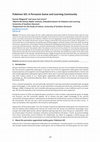
The present article argues that the mobile augmented reality game Pokémon GO demonstrates what we... more The present article argues that the mobile augmented reality game Pokémon GO demonstrates what we have chosen to coin a pervasive learning community. Normally, communities are centred on a specific game, associated real-world events, and online communities, but Pokémon is different since the digital game world runs parallel with game activities in physical reality. This mobile and pervasive structure changes communities from previous binary modes of being either in or out of community to a heterogeneous possibility space of being engaged in all kinds of places all the time while interacting with friends, acquaintances, and strangers thereby reshaping and expanding learning formations of communities. This study is built upon field observations, interviews, and online questionnaires of Pokémon GO players. We wanted to find out who played Pokémon GO, when they played, where they played, and with whom they played, for how long how learning took place, and how the Pokémon Go communities ...
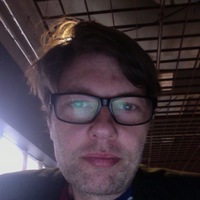

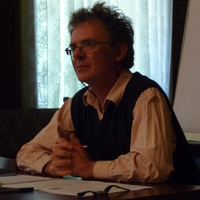




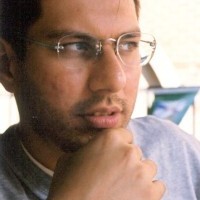



Uploads
Papers by Lasse Juel Larsen